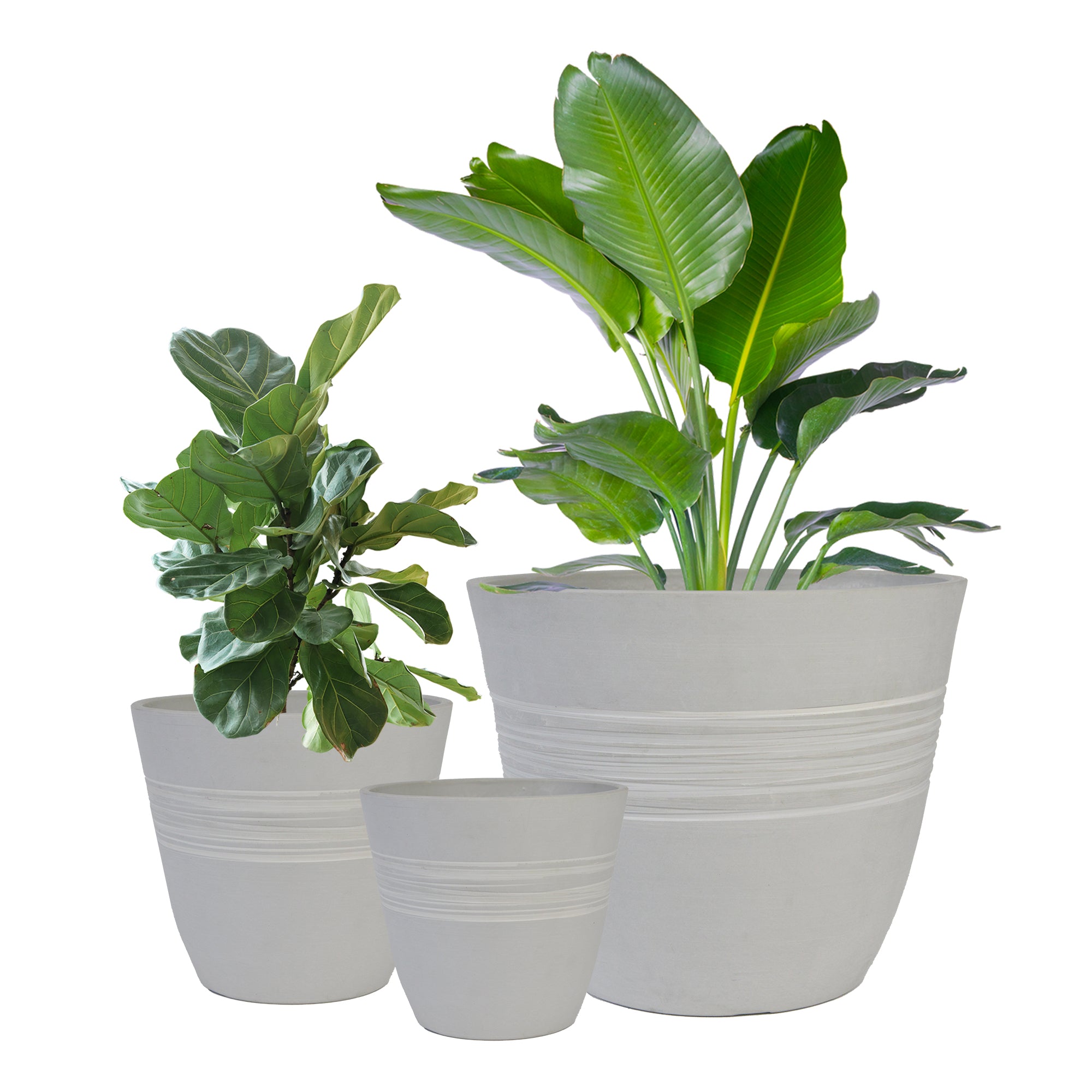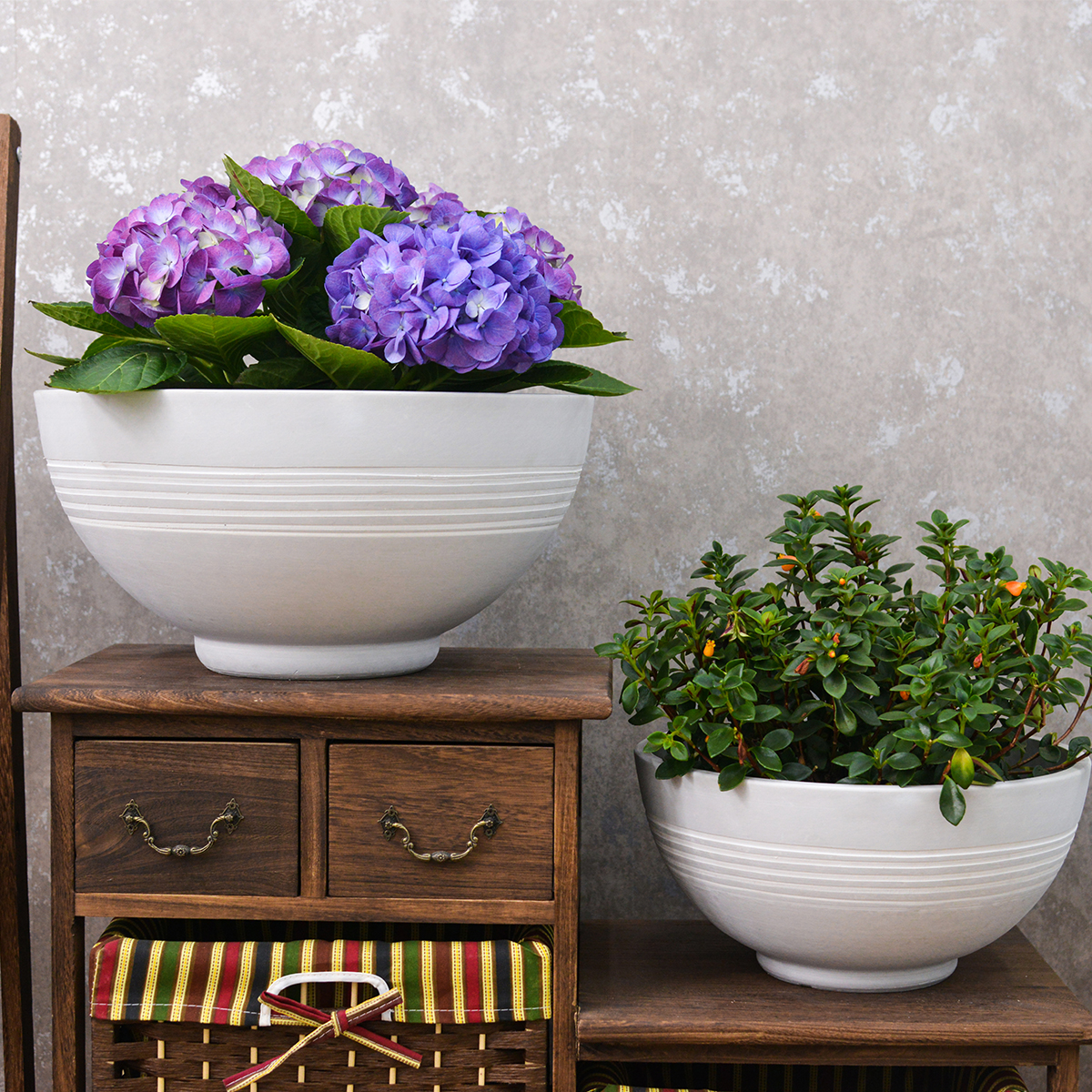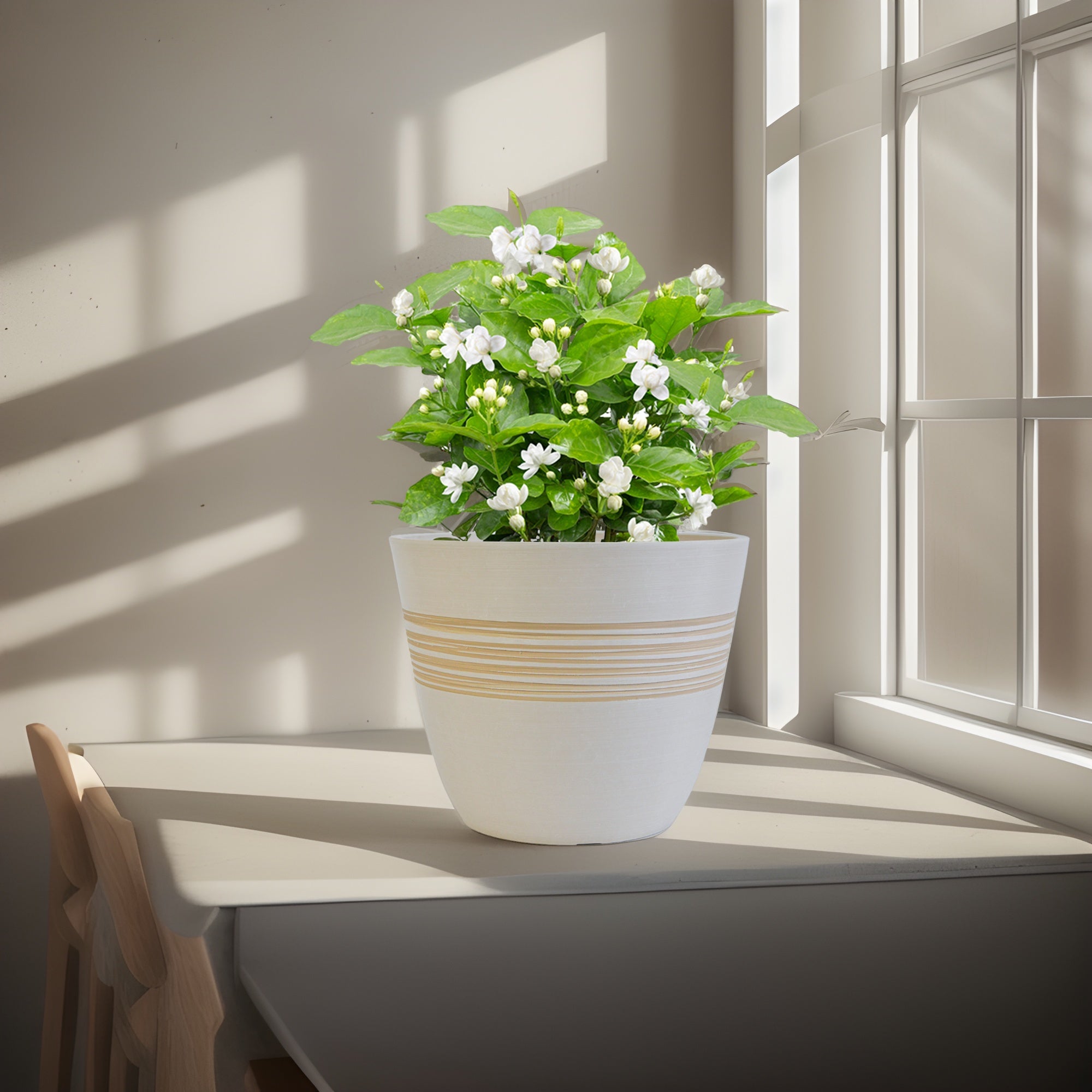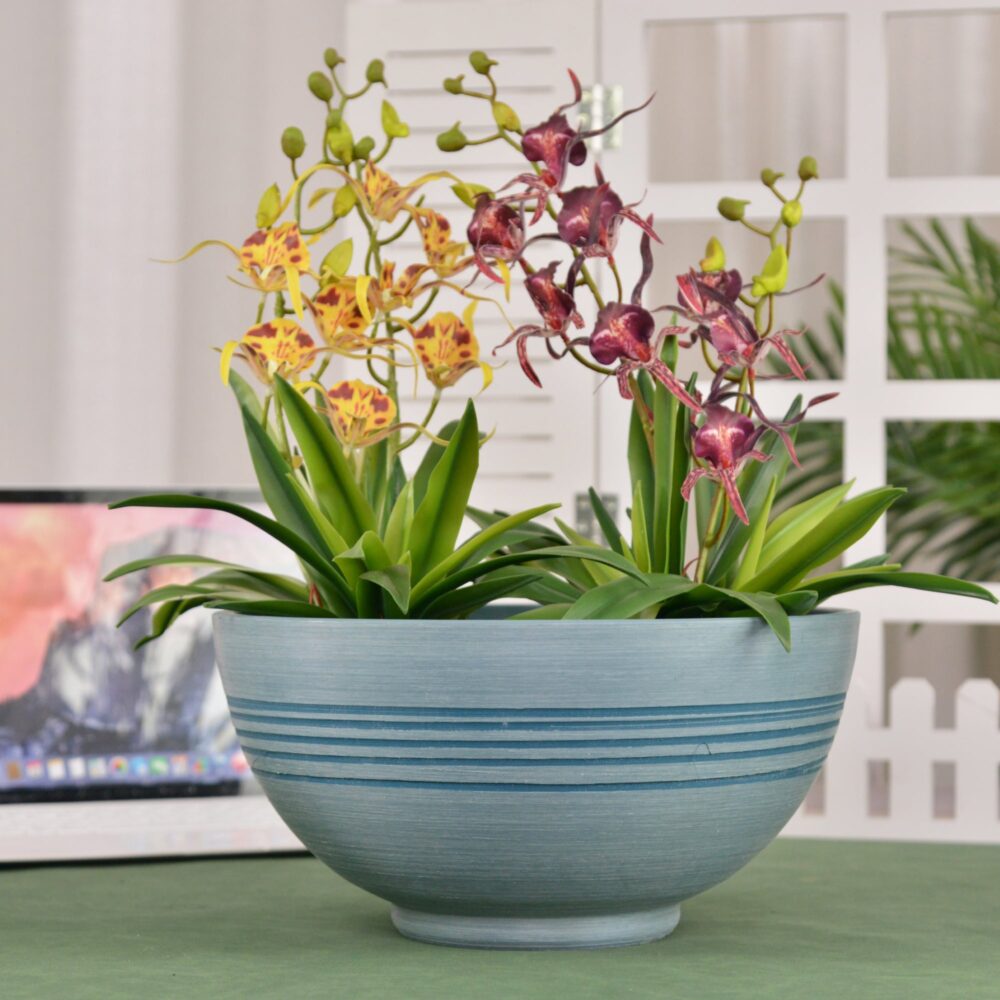Gaillardia in Pots: The Complete Guide to Growing Cheerful Blanket Flowers Outdoors
Want to brighten your patio, balcony, or garden with vibrant, daisy-like flowers that bloom all summer long? Gaillardia, commonly known as Blanket Flower, is a wonderfully easy and rewarding choice for outdoor container gardening. Celebrated for their brightly colored, often bi-colored, daisy-like flowers, and their exceptionally long blooming season and low-maintenance nature, Gaillardias are perfect for adding carefree color to sunny outdoor spaces. This comprehensive guide will provide you with everything you need to know to grow Gaillardia successfully in outdoor pots, from selecting the best varieties and containers to mastering essential care techniques for a season filled with Blanket Flower charm.
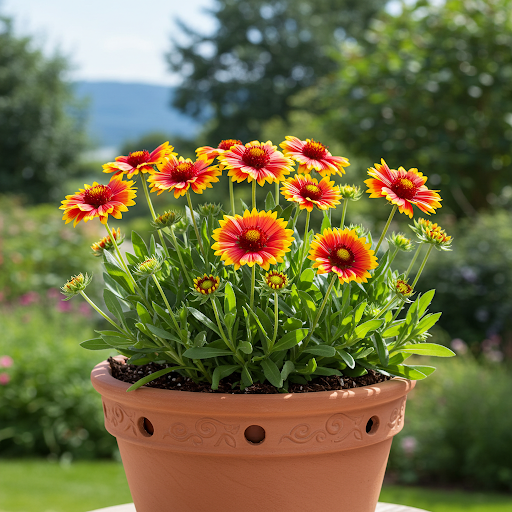
Gaillardia
What are Gaillardia (Blanket Flowers)?
Gaillardia, commonly known as Gaillardia or Blanket Flower, is a genus of herbaceous flowering plants in the Asteraceae family (daisy family). Native to North and South America, Gaillardias are popular annuals, biennials, and perennials prized for their brightly colored, daisy-like flowers and exceptionally long blooming season. Gaillardia flowers are known for their warm, vibrant colors, typically in shades of red, orange, and yellow, often bi-colored or tri-colored with striking patterns. They have a classic daisy flower shape, with ray florets (petals) that are often toothed or fringed at the tips, surrounding a prominent central disk. Gaillardia plants exhibit diverse growth habits, from compact and bushy to upright and spreading, ranging in height from under a foot to over 3 feet tall, depending on the species and variety. They are known for their sunny disposition, exceptionally long blooming season (summer to fall), cheerful and often fiery colors, low-maintenance nature, and attractiveness to butterflies and other pollinators, making them a classic and invaluable addition to gardens and containers, especially for adding continuous summer color and attracting wildlife.
Are Gaillardia (Blanket Flowers) Good for Outdoor Pots?
Yes, Gaillardia (Blanket Flowers) are exceptionally well-suited for outdoor pots and container gardening. Their long blooming season, adaptable growth habits, tolerance of various conditions including heat and drought, and bright, cheerful flower colors make them ideal for filling pots, window boxes, and mixed container arrangements with vibrant, daisy-like blooms. Gaillardias thrive in full sun locations and bloom profusely throughout the warm season, providing an exceptionally long-lasting and delightful floral display in containers. Their low-maintenance nature and striking, colorful flowers make them a fantastic and rewarding choice for container gardens of all styles, especially for adding a touch of southwestern, wildflower, or cottage garden charm to patios, balconies, and decks. Growing Gaillardia in pots also allows you to easily move them to optimal locations and control their growing conditions, especially drainage, which is important in heavy soils.
Ideal Growing Conditions for Gaillardia in Pots:
Types of Gaillardia for Pots: Many Gaillardia varieties are excellent for pots, but consider your desired height, flower color, and habit when choosing:
- Dwarf Gaillardia: (Gaillardia aristata dwarf types, Gaillardia x grandiflora dwarf varieties) – Compact and smaller in stature, typically under 1 foot tall. Ideal for small to medium pots, window boxes, and edging. Known for their neat, bushy habit and profusion of smaller flowers. Excellent for creating dense, colorful displays in pots and for the front of mixed arrangements. Look for varieties like ‘Goblin’, ‘Arizona Sun’, ‘Arizona Apricot’, and ‘Fanfare Burgundy’.
- Compact Gaillardia: (Gaillardia x grandiflora compact types, Gaillardia pulchella compact varieties) – Reaching 1-2 feet tall, these are versatile and popular for general garden use and containers. Suitable for medium to large pots and mixed containers, providing a good balance of height and flower size. Offer a wide range of warm colors and bi-colors, and single or semi-double flower forms. Look for varieties like ‘ Mesa Series’, ‘Spintop Series’, ‘Lollipops Series’, and ‘Galya Series’.
- Upright Gaillardia: (Gaillardia aristata, Gaillardia pulchella) – Reaching 2-3 feet tall or more, these are best suited for larger pots as focal points or back-of-container plants in mixed arrangements. Gaillardia aristata(Common Gaillardia) and Gaillardia pulchella (Indian Blanket) are taller species that offer more height and a wildflower feel to larger container gardens. Choose taller varieties for larger pots or for a backdrop in mixed containers. Consider staking taller varieties in pots to prevent them from flopping over, especially in windy locations.
- Double-Flowered Gaillardia: (Gaillardia x grandiflora double cultivars, Gaillardia pulchella double types) – Produce fully double or pompon-like flowerheads with many petals, resembling dahlias or carnations. Offer a more lush and formal flower appearance compared to single-flowered types. Available in various colors and heights. Look for varieties like ‘Tokajer’ (double yellow-red), ‘ юбилей’ (double red-yellow), ‘ میکسড doubles’, and ‘ ക്രിസ്റ്റാ’.
- Novelty Colors & Forms: (Burgundy, peach, orange shades, quill-petals, rolled petals) – Beyond the classic red, orange, and yellow bi-colors, explore varieties in a wider range of warm colors (burgundy, peach, apricot, coral) and unique flower forms (spider-like petals, rolled petals, pinwheel shapes). Many Gaillardia x grandiflora and Gaillardia pulchella cultivars offer unique colors and forms. Look for varieties like ‘Burgundy’, ‘Apricot Gaillardia’, ‘Peach Swirl’, ‘Oranges and Lemons’, ‘Spiders’, and ‘ গ্র্যান্ড Monarch’.
Light: Gaillardia thrive in full sun. They need at least 6-8 hours of direct sunlight per day to bloom profusely and maintain vibrant colors and sturdy stems. Choose a sunny location for your Gaillardia containers, such as a south-facing patio, balcony, or garden bed. In shady locations, Gaillardias will produce fewer blooms, become leggy, and may be more susceptible to diseases like powdery mildew. Full sun is essential for optimal flowering and strong, upright growth.
Soil: Gaillardia need well-draining soil that is rather lean and even slightly poor. Use a high-quality potting mixspecifically formulated for containers or flowers. Amend potting mix with perlite or coarse sand to improve drainage and aeration, especially for heavier potting mixes. Gaillardias are quite drought-tolerant and thrive in soil that is not overly rich or constantly soggy. Avoid heavy, compacted soil or garden soil in pots, as they can become waterlogged. A slightly acidic to neutral pH (around 6.0-7.0) is ideal for most Gaillardia. Excellent drainage is crucial to prevent root rot, especially in pots.
Watering: Gaillardia are exceptionally drought-tolerant once established, and prefer slightly dry to moderately moist soil. Water thoroughly when the top inch of soil feels dry. Water deeply until water drains out of the drainage holes. Allow the soil surface to dry out somewhat between waterings. Avoid overwatering and soggy soil, which can lead to root rot. Gaillardias are more tolerant of underwatering than overwatering. Watering frequency will depend on weather conditions, light levels, pot size, and plant size. During hot, sunny, or windy weather, you may need to water more frequently, especially for young plants and during peak bloom. Check soil moisture regularly and adjust watering accordingly. Water at the base of the plant to keep foliage and flowers dry and help prevent fungal diseases.
Temperature: Gaillardia are hardy and adaptable plants that tolerate a wide range of temperatures. They are cold-hardy perennials or hardy annuals/biennials in USDA zones 3-10, depending on the species and variety. They perform well in average summer temperatures between 65°F to 85°F (18°C to 29°C). They are very heat-tolerant and thrive in hot, sunny conditions. They are also cold-hardy and can withstand freezing temperatures in winter dormancy for perennial varieties. Check the hardiness of your specific Gaillardia variety if you intend to overwinter them outdoors in pots in colder zones. Gaillardias are well-suited to hot, dry summer conditions.
Fertilizer: Gaillardia are light feeders and generally do not require rich soil or heavy fertilization. Over-fertilizing can actually lead to leggy growth, weak stems, and fewer flowers. Fertilize sparingly, if at all, especially when grown in pots. If desired, you can apply a very dilute, balanced liquid fertilizer (e.g., 10-10-10 or 20-20-20) once or twice during the growing season, but often they perform perfectly well without any supplemental fertilizer, especially if using a good quality potting mix that contains some initial nutrients. Avoid high-nitrogen fertilizers, which can promote leafy growth at the expense of blooms. Lean soil conditions actually encourage stronger stems, more compact growth, and more abundant flowering in Gaillardia, as they are adapted to somewhat poor, well-drained soils.
Choosing the Right Pots for Gaillardia:
Suitable Pot Types: Gaillardia are adaptable to various pot types, including terracotta, ceramic, plastic, resin, and metal pots. Consider these factors when selecting pot types for Gaillardia:
- Terracotta Pots: Porous, allow excellent aeration and drainage, and aesthetically natural and classic. Terracotta is an excellent choice for Gaillardia as it helps prevent overwatering and promotes good root health, which is especially beneficial for drought-tolerant plants like Gaillardia. However, terracotta pots also dry out more quickly, so monitor soil moisture, especially in hot weather and for more moisture-loving varieties.
- Ceramic Pots: Available in many decorative styles, can add a decorative element to your container garden, and retain moisture reasonably well. Ensure good drainage. Choose based on your desired aesthetic and moisture retention needs. Glazed ceramic pots retain moisture better than unglazed terracotta.
- Plastic Pots: Lightweight, inexpensive, retain moisture well, and are available in various colors and styles. Excellent choice for Gaillardia, especially for moisture retention in sunny, hot locations, and for larger pots that need to be moved. Choose good quality plastic pots with drainage holes. Lighter colored plastic pots may heat up less in direct sun.
- Resin Pots: Lightweight, durable, available in various styles mimicking terracotta or ceramic, and offer a balance of drainage and moisture retention. A good alternative to heavy ceramic pots, and often more durable than terracotta or plastic.
- Metal Pots: Can offer a modern or rustic look, and are durable. Ensure good drainage and be mindful that metal pots can heat up more in direct sun, potentially drying out soil more quickly.
Drainage: Excellent drainage is essential for Gaillardia to prevent root rot. Ensure your chosen pot has drainage holes at the bottom. Avoid pots without drainage holes. Adding a layer of gravel or pot shards at the base of the pot is generally not necessary if using a well-draining potting mix, but can be done for extra precaution, especially in heavier pots. Elevating pots slightly on pot feet or bricks can further improve drainage and air circulation around the base.
Pot Size: Choose pot sizes appropriate for the type and mature size of the Gaillardia you are planting, and the desired display. Gaillardia have taproots and need adequate depth for root development, especially for perennial varieties.
- Dwarf Gaillardia: For dwarf Gaillardia, pots that are 8-10 inches in diameter and at least 8 inches deep are suitable for individual plants. For mass plantings or window boxes, use larger containers or window boxes with spacing of about 10-14 inches between plants.
- Compact Gaillardia: For compact Gaillardia, pots that are 10-14 inches in diameter and at least 10 inches deep are suitable for individual plants. For fuller displays or mixed plantings, use pots that are 14-18 inches or larger, or larger tubs.
- Upright Gaillardia: For taller Gaillardia varieties, use pots that are 14-18 inches in diameter or larger and at least 12-14 inches deep for individual plants, or larger tubs or raised beds for multiple plants. Taller Gaillardia need more root space and stability.
Color and Style: Choose pot colors and styles that complement your Gaillardia blooms and your outdoor décor. Earthy tones like terracotta, brown, or natural stone colors enhance the natural, wildflower look of Gaillardia. Brightly colored pots can create a bolder display, especially when paired with solid yellow or red Gaillardia varieties. Southwestern-style pots can complement the native origins of Gaillardia. Neutral pots in white, gray, or black can provide a clean and versatile backdrop and allow the Gaillardia flower colors and patterns to stand out. Consider the overall style of your patio or garden and choose pots that harmonize with the surroundings.
Essential Care Tips for Thriving Gaillardia in Outdoor Pots:
- Watering: “Water When Top Inch of Soil is Dry, Avoid Overwatering”. Water thoroughly when the top inch of soil feels slightly dry. Water deeply until water drains from drainage holes. Allow soil surface to dry slightly between waterings. Avoid overwatering and soggy soil. Water more frequently during hot, sunny, or windy weather, especially for young plants and during peak bloom.
- Sunlight: Provide Full Sun (6-8+ Hours Daily). Place Gaillardia pots in a location that receives full sun for best blooming, vibrant colors, and sturdy growth.
- Fertilizing: Fertilize Sparingly, If At All. Gaillardia are light feeders and generally do not need much fertilizer. Fertilize very sparingly, if at all, with a very dilute, balanced liquid fertilizer only once or twice during the growing season if desired. Avoid over-fertilizing.
- Deadheading (Encourage More Blooms & Tidiness): Deadhead spent or faded flowers regularly to encourage even more blooms and keep plants looking tidy. Snip off faded flower heads just below the flower. Regular deadheading is very beneficial for extending the exceptionally long bloom season of Gaillardia.
- Pruning (Minimal Pruning Needed): Gaillardia generally do not require much pruning. You can lightly trim back plants after their first main flush of bloom to encourage a second, potentially even stronger, flush of flowers. In late fall or early spring, cut back dead foliage to the ground. Taller varieties may benefit from pinching back stem tips in late spring to encourage bushier growth and shorter stature, if desired.
- Staking (For Taller Varieties in Pots): Taller Gaillardia varieties, especially when grown in pots, may benefit from staking to prevent them from flopping over, particularly in windy locations or after heavy rain. Use bamboo stakes or plant supports to provide support as needed.
- Overwintering (For Perennial Gaillardia in Cold Climates): In colder USDA zones where perennial Gaillardia are hardy, potted Gaillardia can often be overwintered outdoors. Provide some winter protection by mulching heavily around the base of the plants and moving pots to a sheltered location, such as against a south-facing wall or unheated garage, especially in very cold or exposed areas. In extremely cold zones, you may need to insulate pots further by wrapping them in burlap or bubble wrap. Check the hardiness of your specific Gaillardia variety.
- Dividing (Every 2-3 Years for Perennials): Perennial Gaillardia plants benefit from division every 2-3 years to prevent overcrowding and rejuvenate plants. Division is also a good way to propagate Gaillardia. Divide in spring or fall. Dig up the clump, divide the root ball into sections, and replant each section in fresh potting mix.
- Pest and Disease Control: Gaillardia are generally relatively pest and disease-resistant, but monitor for occasional pests like aphids and spider mites. Powdery mildew can be a common fungal disease, especially in humid conditions or with poor air circulation. Ensure good air circulation by spacing plants adequately, avoid overcrowding, water at the base of the plant, and provide good drainage. Treat any pest or disease issues promptly with insecticidal soap, horticultural oil, neem oil, or appropriate fungicides if necessary.
Popular Gaillardia Cultivars for Pots (by Type/Color/Flower Form):
- Dwarf Gaillardia: ‘Goblin’ (red and yellow bi-color), ‘Arizona Sun’ (red and yellow bi-color), ‘Arizona Apricot’ (apricot-orange), ‘Fanfare Burgundy’ (burgundy rolled petals), ‘ Mesa Yellow’ (solid yellow dwarf)
- Compact Gaillardia: ‘ Mesa Series’ (various warm colors, compact), ‘Spintop Series’ (various bi-colors, compact), ‘Lollipops Series’ (various bright colors, compact double), ‘Galya Series’ (various warm colors, compact), ‘ গ্র্যান্ড Luxe Apricot’ (apricot-orange double)
- Upright Gaillardia: Gaillardia aristata (Common Gaillardia, tall yellow species), Gaillardia pulchella (Indian Blanket, tall red and yellow species), ‘Red Plume’ (tall red double), ‘Golden Goblin’ (tall golden yellow)
- Double-Flowered Gaillardia: ‘Tokajer’ (double yellow-red), ‘ юбилей’ (double red-yellow), ‘ میکسড doubles’ (various double colors), ‘ ക്രിസ്റ്റാ’ (double red), ‘ Butterscotch Puffs’ (double yellow pompon)
- Novelty Colors & Forms: ‘Burgundy’ (solid burgundy-red), ‘Apricot Gaillardia’ (apricot-orange single), ‘Peach Swirl’ (peach and yellow bi-color), ‘Oranges and Lemons’ (orange and yellow bi-color), ‘Spiders’ (spider-like petals), ‘ গ্র্যান্ড Monarch’ (large bi-color blooms), ‘Luminosa’ (solid yellow)
- Seed Mixes: ‘Indian Blanket Seed Mix’, ‘Wildflower Gaillardia Mix’, ‘Mixed Colors Gaillardia Seeds’, ‘Dwarf Gaillardia Mix’, ‘Heirloom Gaillardia Seed Pack’
In Summary:
Growing Gaillardia (Blanket Flowers) in outdoor pots is a wonderfully rewarding way to add masses of vibrant, long-lasting color and low-maintenance beauty to your patios, balconies, and gardens. Their exceptionally long blooming season, diverse colors and habits, drought tolerance, and relatively easy-care nature make them a perfect choice for container gardeners seeking cheerful, pollinator-friendly plants that thrive in sunny, hot locations. By providing full sun, lean and well-draining potting mix in pots with drainage, watering appropriately and avoiding overwatering, fertilizing sparingly if at all, deadheading spent flowers, and providing minimal care, you can easily cultivate thriving Gaillardia plants in pots and enjoy their vibrant Blanket Flower charm from early summer into fall, year after year for perennial varieties.
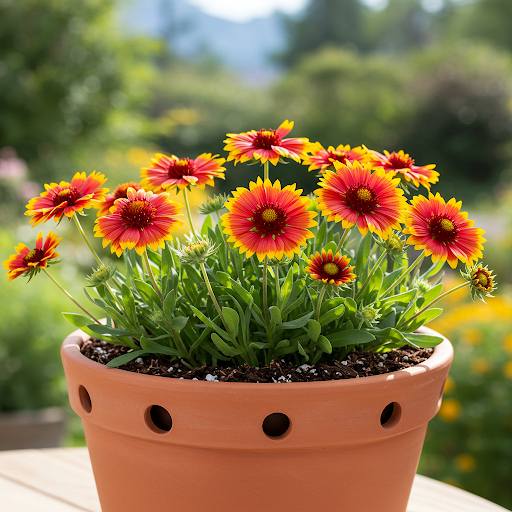
Gaillardia
For more detailed botanical information and to explore the diverse world of Gaillardia species and cultivars, you can visit the Wikipedia page on Gaillardia.
Important Note: Gaillardia (Blanket Flower) plants are generally considered non-toxic to humans and pets, making them a safe and attractive choice for households with children and animals. The primary care benefits of Gaillardia in pots are their exceptionally long blooming season, cheerful and often fiery flower colors and patterns, and attractiveness to butterflies and other pollinators, bringing life and vibrancy to your outdoor spaces for many months. With these simple care practices, you can enjoy a season filled with the vibrant beauty and ecological value of Gaillardia in your outdoor containers.**
Plant Pots 6 inch 8 inch 12 inch for Indoor Outdoor Plants, Set of 3 Modern Decorative Planter with Drainage Hole, Decorative Flower Pots
By greenship-seo|2025-04-10T06:38:40+00:00January 16, 2025|Categories: Hand-carving Series|Tags: Decorative Flower Pots|
20T
By greenship|2024-08-13T06:42:22+00:00August 13, 2024|Categories: Hand-carving Series|
KC3-09k
By greenship|2024-08-16T06:24:36+00:00August 16, 2024|Categories: Hand-carving Series|
11V
By greenship|2024-08-13T03:05:48+00:00August 13, 2024|Categories: Hand-carving Series|
Planter for Indoor Outdoor Plants, Set of 2 Modern Decorative Plant Pots with Drainage Hole, Decorative Flower Pots
By greenship-seo|2025-04-10T07:46:01+00:00January 9, 2025|Categories: Hand-carving Series|Tags: Decorative Flower Pots, Self-Watering Pots|
13 inch Planter for Indoor Plants, Set of 2 Modern Decorative Plant Pots with Drainage Hole, Cute Bowl Shape Flower Pots
By greenship-seo|2025-04-10T07:41:46+00:00January 10, 2025|Categories: Hand-carving Series|Tags: Decorative Flower Pots, Self-Watering Pots|

